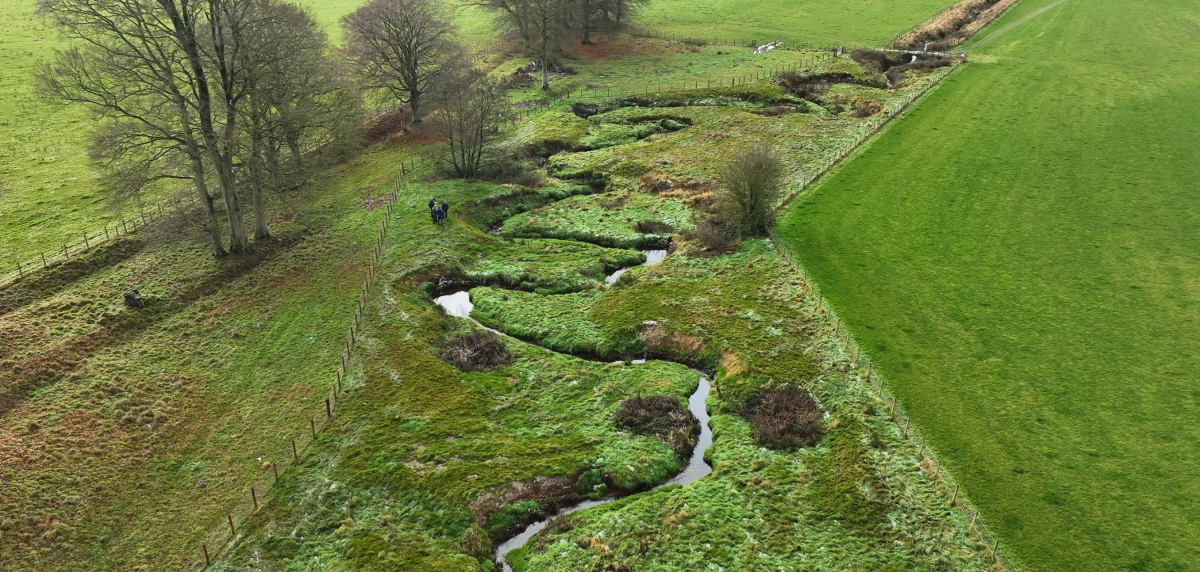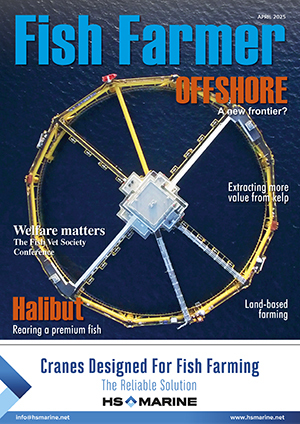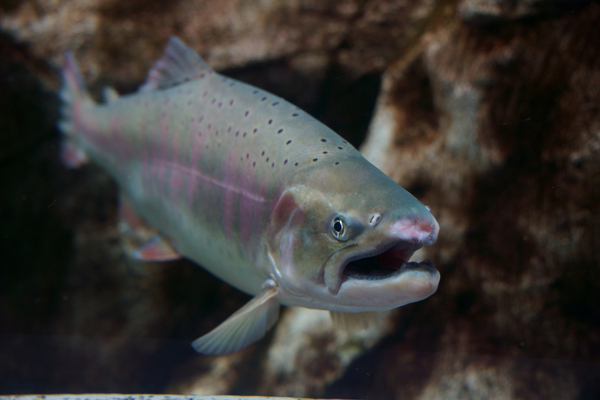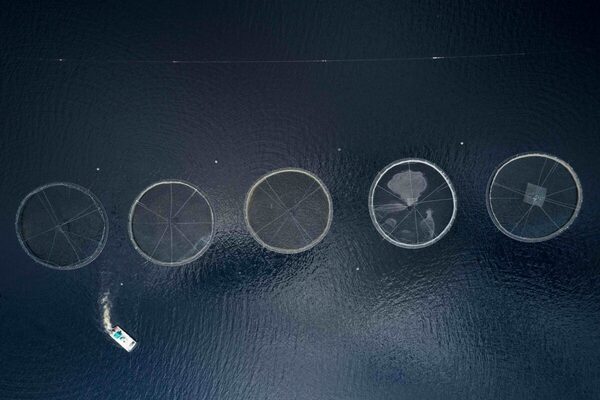Tales of the riverbank: the Wild Fisheries Fund
The Wild Fisheries Fund is a groundbreaking conservation fund, supported by salmon farmers, to help save Scotland’s iconic wild salmon and sea trout from decline.
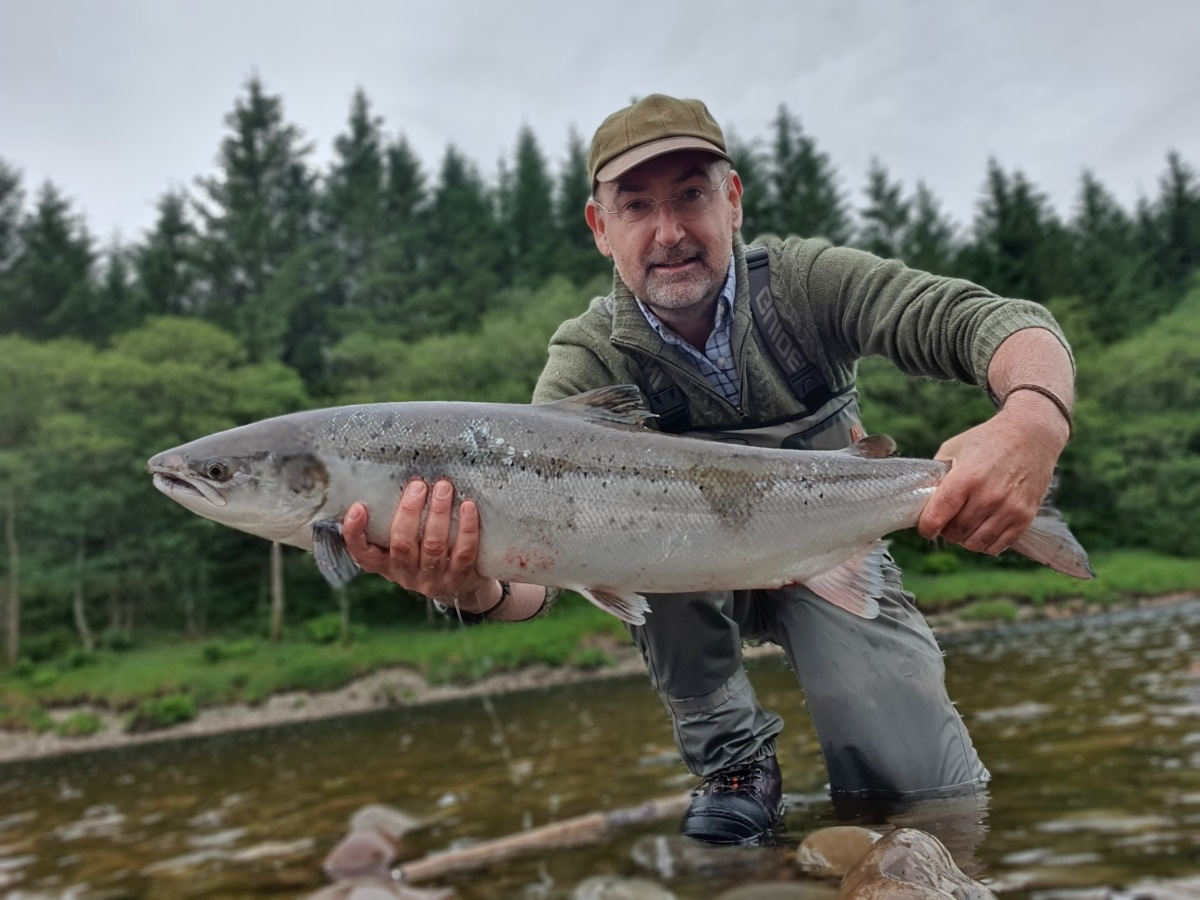
Habitat loss, and rising sea and river temperatures primarily due to climate change, have impacted on wild salmon and sea trout populations throughout the UK and all over the Scottish coastline.
These fish now have a marine survival rate of just 1-5%, compared to around 25% only three decades ago.
The Scottish Government has identified other pressures facing wild salmon, including non-native plants, predation by fish, birds and seals, and obstacles to fish passage including dams and weirs.
Salmon farming companies, which operate exclusively on the west coast, Orkney and Shetland, launched the “Wild Salmonid Fund” in 2021, to play their part in finding solutions, engaging constructively with the wild fish sector, and taking meaningful action to save wild salmon.
The fund, later rebranded as the “Wild Fisheries Fund”, is part of a five-year commitment of £1.5m from Scotland’s salmon farmers. Grants are available to all river catchment organisations across Scotland. Around £475,000 has been invested since 2021.
Salmon Scotland launched a dedicated website (www.wildfisheriesfund.co.uk) to support the fund. Every project which has received funding since 2021 is listed, and visitors can keep up to date on progress.
The fund is coordinated by Fishery Manager Jon Gibb, who is based in Fort William and has championed a constructive relationship between the farm-raised salmon sector, and fisheries and angling groups.
Gibb says: “Wild salmon are facing a deep and dire crisis, and the aquaculture sector can play a vital role in mitigating their decline.
“In 2023 wild Atlantic salmon in Scotland were officially classed as an endangered species. This keystone species is under very serious threat from a wide range of impacts both in the river and at sea, and any projects to further understand those impacts and mitigate against them are urgently required.
“The Wild Fisheries Fund provides a rare and exceptional opportunity for rural and coastal communities to access vital funds aimed at improving their local rivers and lochs.”
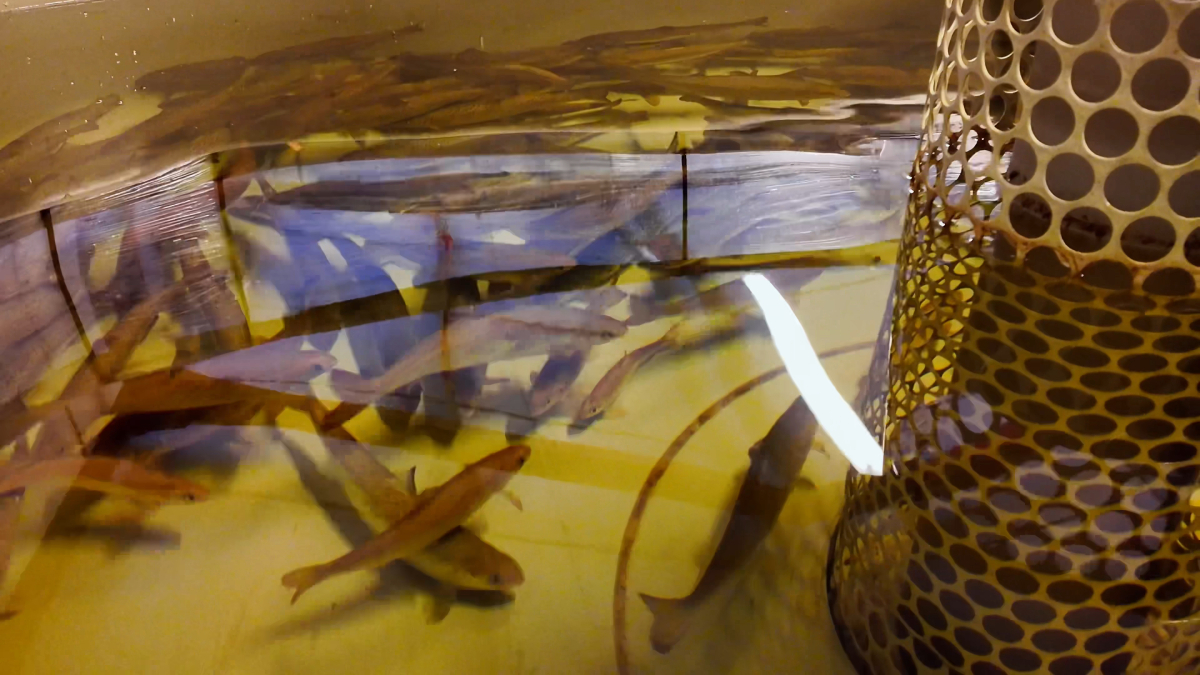
Preserving salmon habitats
Last year eight projects were funded, including the West Coast Gene Bank, a partnership between Otter Ferry Seafish and the River Ruel Improvement Association, which helps restore Atlantic salmon populations in the River Ruel by growing young salmon into adults in a hatchery.
The River Ruel in Argyll is one of the major rivers on the Cowal Peninsula, flowing into Loch Ruel north of the Kyles of Bute. The typical spate-fed river is an important catchment for Atlantic salmon and sea-run brown trout, with a 12km length of fishable water, and a heritage of angling for the local community and visitors.
Surveys of fish populations and fish habitat identified that large amounts of fine sediments reduce the ability of the river to produce optimal number of smolts, which is a consequence of the amount of soil being eroded from riverbanks. To restore the river habitat and improve the recruitment of young fish, a programme of habitat improvement works has been undertaken since 2018.
The scheme to tackle erosion on the Ruel, improving the habitat through tree planting and fencing, received a further £10,000 in 2024, marking a third year of funding.
Alan Kettle-White, Director of Operations at Argyll Fisheries Trust, says: “Part of this project we’re doing with Salmon Scotland is to reduce the amount of fine sediment being eroded from river banks and clogging up the spawning beds and the juvenile nursery habitat.
“We’ve done this over three years now, in terms of bringing in a technique called green bank revetment, and that consists of consolidating eroded banks with a process with untreated hardwood posts using unsold Christmas trees, and relaxing the bank angle, which reduces erosion.
“We’ll be back to fence this area off from cattle and also plant some trees. So over the period of three or four years, we should see this habitat come back to life.”
On top of this, another initiative on the Ruel received £49,404 from the fund in 2024, this time to start a live wild salmon gene bank at Otter Ferry Seafish nearby in Cowal, with a trial using fish from the river. Organisers hope the project will not only help stock several regional rivers but also become a “blueprint”, paving the way for a wider “genetic insurance” network of banks across the country.
The fund’s website explains: “The River Ruel Improvement Association is working with Otter Ferry Seafish Ltd to develop a live gene bank for Atlantic salmon that can be used to improve the health of the salmon population and evaluate the effectiveness of conservation aquaculture in support of pressured population of salmon.”
Otter Ferry Seafish, the oldest independent fish farming company in Scotland, operates the UK’s only halibut hatchery and runs trials for the salmon farming sector.
By setting up a live salmon gene bank, the project seeks to preserve the genetic material of threatened wild populations, ensuring their survival and adaptability. Using advanced genetic screening, the team will assess the diversity of salmon in the River Ruel and determine the need for egg stocking from the gene bank. The goal is to help restock several regional rivers and set a model for other areas to follow.
Alastair Barge, Managing Director of Otter Ferry Seafish, explained in a video posted on the website last year: “The project has moved forward quite swiftly, and is looking quite good. The project started with the fishery biologist electrofishing the river.
“We went and joined in that process, which was fascinating.
“We managed to catch 150 S2 parr and we put them in our specialist unit, into three tanks. The first challenge was: would the fish settle coming from the river? We took them from the Ruel River, which is only separated by the top of a hill, so our water supply here was quite similar. The fish transferred very well.
“We gave them more cover in a tank than we would normally as an aquacultural system. The fish settled in well. We fed them on mealworms, which was new to us. As aquaculture, we would be thinking of straight onto pellet. We’ll wean them off that onto a dry formulated pellet.”
Each individual fish will be tagged and genotyped. “Then we’ll be able to monitor the performance of each fish, and we’ll know the parentage of each fish,” Barge says. “So there’s fascinating times ahead, generating data of the wild population now compared to a farm population now.”
Currently they are awaiting the results of the genetic testing, says Andrew Barker of the River Ruel Improvement Association.
He explains: “When received, we will know inter alia the sex of the parr, and also whether the fish have any farmed fish genes, both of which are factors very much affecting the whole project.”
Next the fish will be transferred to saltwater, Barker adds: “We’ll smolt them in April 2025, and we would hope by December 2027, we would have mature fish. We would be taking them right through to maturity. So that would be really the end of the project: producing the eggs from the wild fish, and enhancing the survival.
“The 150 fish that we took out of the river, if we’d left them to go to sea and come back to return to the River Ruel, you might have had one of those fish coming back. We’re hoping we might get 50 female fish out of this population, so, calculations, you get an awful lot of eggs compared to that one fish coming back. We’ve got 50 mature females coming back, and genetically that will be interesting to look at.
“But the first stage looks very encouraging. We thought that was the difficult bit, going to get the fish from the river and let them settle into a farm situation, but they appear to be doing that very well. And we will see what happens in the next two years. It will be fascinating.
“The River Ruel is a typical west of Scotland river, and this can be replicated for many rivers.
“I’ve lived here long enough to see the demise of wild salmon in the rivers, and it started before we started fish farming. The demise was in place. It hasn’t improved, it’s continued to go down. And there are many causes for that. But if we can start with the rivers, improving the habitats and then helping to enhance the stock, I would be very keen to see some benefit in my lifetime.”
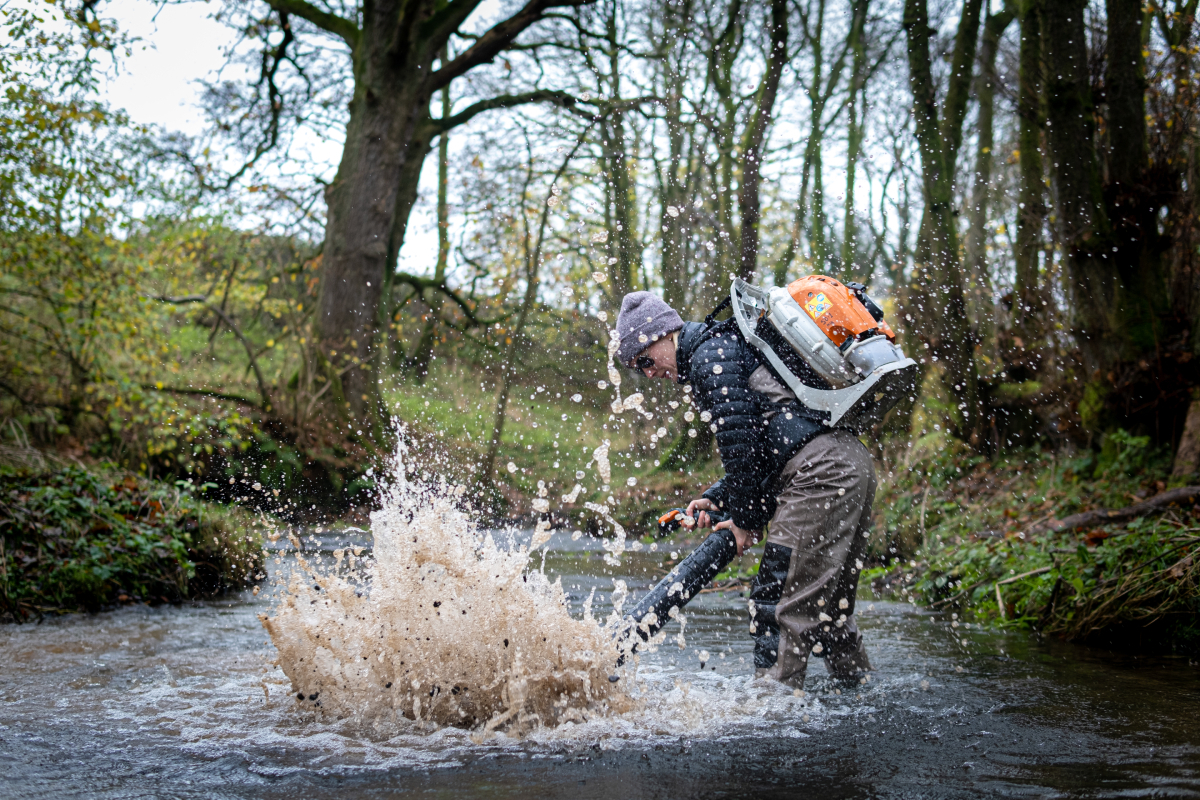
The Mauchline Burn
Further down the Firth of Clyde, a habitat restoration project on the Mauchline Burn, run by the Ayrshire Rivers Trust, received £17,026 to install livestock fencing and plant trees, in order to stabilise riverbanks and create new habitats for salmon.
Struan Candlish, a Fisheries Biologist with Ayrshire Rivers Trust, says: “The Wild Fisheries Fund is incredibly valuable to the trust. This is the third year we’ve been supported by the fund and we just can’t overstate how important it is. The impact this project and others like it have is significant and will help to support wild Scottish salmon for many years to come.”
The website adds: “The Mauchline Burn is quite unique within the River Ayr catchment as it has retained natural river features such as winding meanders, a rarity elsewhere across Ayrshire in agricultural settings. While the burn offers a wealth of pool-riffle-run habitats these are not utilised by salmonids due to eutrophication and sedimentation brought about by livestock access. The project is designed to address this issue at a fairly large and ambitious scale.
“A key component... involves installing 625 metres of livestock fencing to establish protected riparian buffers. Within these buffers, the trust will use locally sourced materials and green engineering techniques such as brash bundles, willow mattress, coir membrane, re-seeding and bank re-profiling to restore eroded and continually collapsing riverbanks back into functioning river features that can provide habitats and resources to a range of species.
“Riparian tree planting will provide a long-term seed stock to support future natural regeneration as well as act to intercept rainfall, slow rainwater run-off, stabilise the riverbanks, provide new habitats and a source of shade, nutrient and food input for fish species. There are sections of the Mauchline Burn that have been straightened and fenced, as part of this project they will also plant trees along these sections.”
Standing beside the Mauchline Burn, Stuart Brabbs, the Manager of Ayrshire Rivers Trust, said last year: “We hope to really kickstart a population here within the next couple of seasons.
“It’s through the support we can get from this fund that’s made it possible, because we couldn’t fund it elsewhere. So we’re very grateful. This is just one job we’ve done with them. We’ve done three now, and it’s been hugely successful. It’s a game changer for us in many ways, and we will bring fish back to this burn, I have no doubt about that.
“It’s going to be a success story, and I hope we can follow this up in a year or two’s time and show you what’s achieved. This is just the early stages, and it will transform over the next two or three years and it will look a different place altogether.”
The Loch Lomond Fisheries Trust also reported progress on its youth outreach programme, called “Project 81 Youth Work”, which was awarded £12,381. The website explains: “This project aims to grow the provision and uptake of sea trout angling and conservation opportunities in the Gareloch area and leave a lasting legacy for the future.”
Speaking on a youth group’s visit to Bakkafrost’s fish farm at Ardyne, Loch Striven, Jon Gibb said: “We were particularly attracted by this proposal because one of the objectives of the fund is to showcase the ability for young people to enter this thriving industry, and what a better opportunity to come to Bakkafrost and hear from people who actually work here, and can actually show that they’ve got rewarding careers here, and a little bit about what salmon farming’s all about.
“One thing I’m particularly interested in is to actually show that the salmon farming industry really is a tremendous employer in rural Scotland. I’m from the Fort William area. I know when I was a young person, everybody left that area and went off to the middle of Glasgow or Edinburgh to work, leaving families behind.
“But nowadays, people can stay in these rural communities and work in a really thriving industry and more importantly, have a really good and a really well paid career path. I’m delighted that the fund’s able to underpin this project.”
Nick Beevers, the Biologist and Manager at the Loch Lomond Fisheries Trust, added: “I felt there was a need to educate the young people that live in my local area about the opportunities for working in the salmon farming industry.
“We’ve seen the latest in salmon farming technology and just how at scale the industry is, just how local the industry is to where they live and the people that work on the sites, and the opportunities that will arise through working in the salmon farming company.”
Michael Hill, the Biological Stakeholder Manager at Bakkafrost Scotland, says: “Everyone’s going to be leaving with a full insight of exactly what fish farming entails, everything from working on a farm, working in the biology department, feeding the fish, and everything in between.
“We’re absolutely delighted to host everyone here today and we hope that the youth group have left with some valuable insight and we hope to see them again in the future as fish farmers or working in aquaculture.”
Salmon Scotland will grant £230,000 of funding to local projects in 2025. Decisions will be taken by Salmon Scotland by 15 April.
